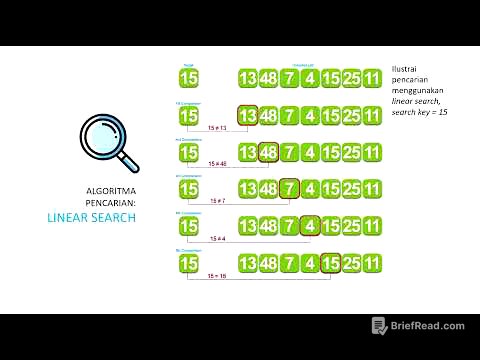TLDR;
This video explains how to calculate the taxable income and tax due for individuals earning purely compensation income. It covers the formula for taxable income, which involves subtracting non-taxable items like mandatory contributions and de minimis benefits from total compensation income. The video also explains how to use the graduated tax table to determine the tax due based on taxable income, and provides several examples to illustrate the calculation process.
- Taxable income is calculated by subtracting non-taxable items from total compensation income.
- The graduated tax table is used to determine the tax due based on taxable income.
- Several examples are provided to illustrate the calculation process.
Introduction to Taxable Income [0:03]
The video begins by defining taxable income as the portion of gross income specified in the tax code that is subject to tax, after authorized deductions, exemptions, or exclusions. It explains that not everything an individual earns is taxed, and only a portion is subject to tax due to deductions, exemptions, or exclusions. The formula for calculating taxable income starts with total compensation income, from which non-taxable items are subtracted.
Calculating Taxable Income [0:50]
To calculate taxable income, start with total compensation income and subtract mandatory contributions like SSS, GSIS, PhilHealth, and Pag-IBIG, as these are not taxable. Only mandatory contributions are subtracted; if an employee contributes more than required, the excess is not excluded from taxable income. Also, non-taxable benefits such as de minimis benefits and other benefits up to a ceiling of P90,000 are subtracted to arrive at the net taxable income, which is the basis for calculating the tax due.
Tax Due and Graduated Tax Table [3:13]
The tax due is calculated based on the taxable income using the graduated tax table from Section 24A of the tax code, as amended. This table has different tax rates for different income levels. The tax table used until 2022 is highlighted, with a note that a different table will be used starting in 2023 as per the TRAIN Law. The procedure for calculating the tax due remains the same, even with the updated tax table.
Example Calculation: Mr. Swabe [5:55]
The video provides an example using Mr. Swabe, a non-minimum wage earner, to demonstrate the calculation of taxable income and tax due. His total compensation includes basic salary, commission, overtime pay, 13th and 14th month pay, other benefits, and de minimis benefits. Mandatory contributions are deducted from the basic salary. The total compensation is calculated by adding all earnings, including de minimis and other benefits, but excluding mandatory contributions.
Deductions and Net Taxable Income [7:59]
To find the net taxable income, deduct non-taxable items from the total compensation. These include mandatory contributions, de minimis benefits, and other benefits up to a ceiling of P90,000. If the total other benefits exceed P90,000, only P90,000 is deducted. The net taxable income is then used to calculate the tax due.
Calculating Tax Due Using the Tax Table [10:13]
The tax due is calculated using the graduated tax table. Find the income range where the taxable income falls and apply the corresponding tax rate. For example, if the taxable income is between P400,000 and P800,000, the tax due includes a basic amount plus a percentage of the excess over P400,000. The video illustrates this with Mr. Swabe's income, calculating the basic tax and the additional tax on the excess amount.
Additional Examples and Tax Form Usage [13:14]
The video provides additional examples with different income levels to further illustrate the tax calculation process. It explains that individuals earning P250,000 or less per year do not pay income tax. For higher incomes, the tax is calculated based on the corresponding tax bracket in the graduated tax table. The video also mentions that these calculations are typically done using the tax form, which will be covered in the next discussion.
![Lecture 08: Taxable Income & Tax Due. Taxation of Individuals. [Income Taxation]](https://wm-img.halpindev.com/p-briefread_c-10_b-10/urlb/aHR0cDovL2ltZy55b3V0dWJlLmNvbS92aS81MExVSzZ6Wm9YVS9tYXhyZXNkZWZhdWx0LmpwZw==.jpg)








